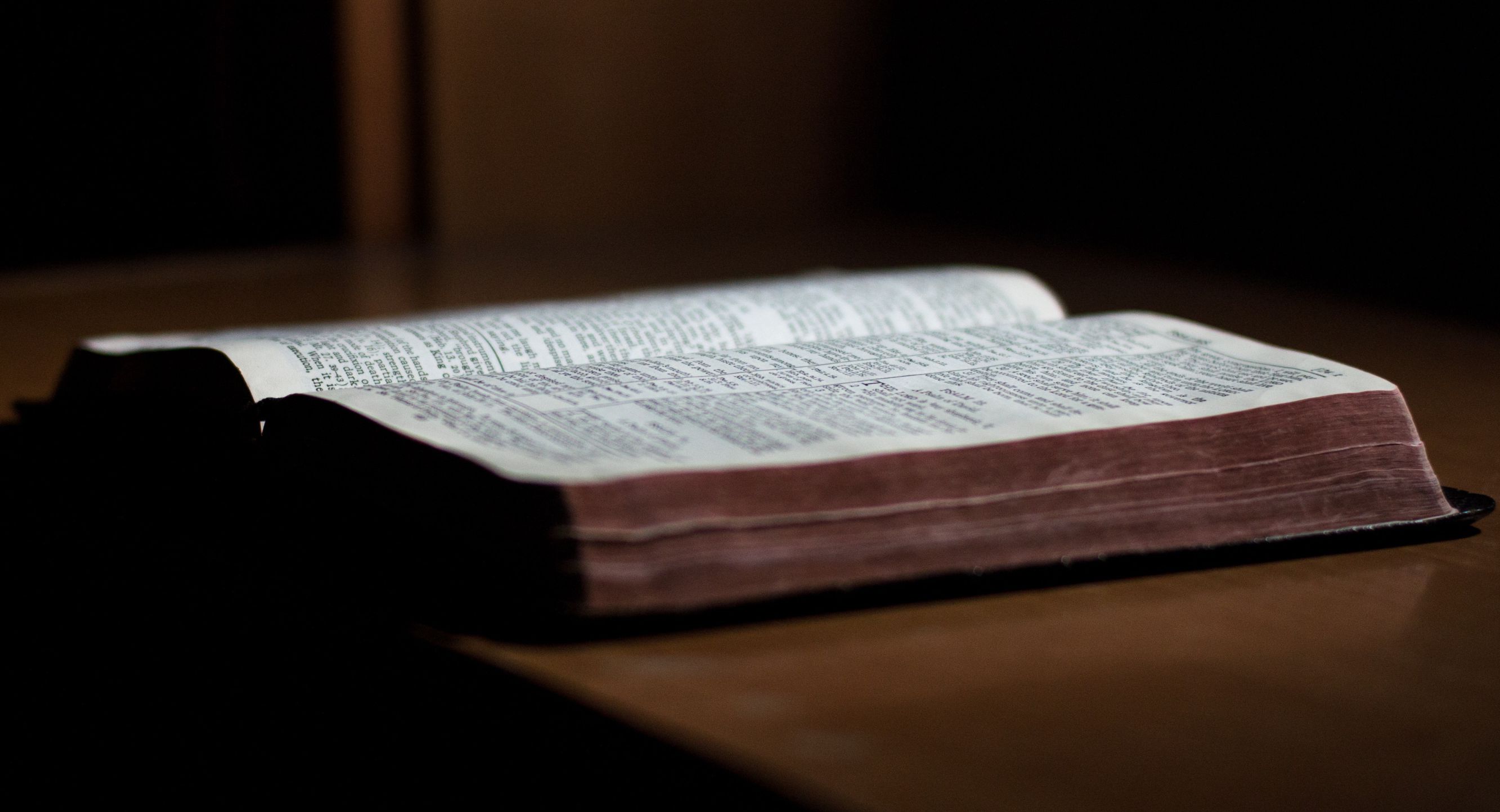The Original Text of the Bible? Reflections on Textual Criticism
Edward Lipiński
Katholieke Universiteit Leuven , BelgiumAbstract
The textual criticism of the Bible, as viewed traditionally, has for its primary object the reconstruction of the original text from manuscript versions and quotations in ancient writings. Since biblical texts have been often expanded and changed in Antiquity, it is not evident what one should regard as original version. Therefore, the scientific object of textual criticism is to trace the history of the text, to identify and characterize its various recensions or adaptations. This is done in the article by examining a few cases in order to illustrate various kinds of intentional changes or developments and of accidental errors, which happened most often in foreign words, place-names, and personal names. Besides, the same consonantal texts can sometimes be understood in different ways, the masoretic vocalization being one of these interpretationsKeywords:
Yhwh-’l, Ararat/Urartu, Nisroch/Sarrukin, Samgar/samagra, Togarmah/ Tugdamme, Kilmad/Kullimer, wayyqtol/qātal, sheol/Shuwala, Aram/Edom, ġazzīrReferences
Ausloos H. – Lemmelijn B. – Trebolle Barrera J. (red.), After Qumran. Old and Modern Editions of the Biblical Texts – The Historical Books (BETL 246; Leuven 2012).
Beaulieu P.-A., „Arameans, Chaldeans, and Arabs in Cuneiform Sources from the Late Babylonian Period”, Arameans, Chaldeans, and Arabs in Babylonia and Palestine in the First Millennium B.C. (red. A. Berlejung – M.P. Streck) (Leipziger altorientalistische Studien
; Wiesbaden 2013) 31-55. (Crossref)
Cross F.M., „The Ammonite Oppression of the Tribes of Gad and Reuben: Missing Verses from 1 Samuel 11 found in 4QSamuela”, The Hebrew and Greek Texts of Samuel (red. E. Tov) (Jerusalem 1980) 105-119, a także w: History, Historiography and Interpretation
(red. H. Tadmor – M. Weinfeld) (Jerusalem 1983) 148-158.
Cross F.M. – Parry D.W. – Saley R.J. – Ulrich E., Qumrân Cave 4, XII: The Samuel Scrolls from Cave 4 (DJD 17; Oxford 2005) 66-67, tabl. X.
Delitzsch Fr., Die Lese- und Schreibfehler im Alten Testament (Berlin – Leipzig 1920).
Helm R., Eusebius: Werke VII. Die Chronik des Hieronymus, 2 wyd. (GCS 47; Berlin 1956; Berlin 31984).
Isebaert R., Lexique étymologique du tokharien (Silk Road Studies 6; Turnhout 2002).
Józef Flawiusz, Dawne dzieje Izraela VI,5,1, §68-70.
Jursa M., „Nabû-šarrūssu-ukīn, rab ša-rēši, und Nebusarsekim (Jer. 39,3)”, Nouvelles assyriologiques brèves et utilitaires 5 (2008) nr 5.
Lane D.J. et al., Peshiṯta II/1b (Leiden 1990).
Lange A., „The Textual Plurality of Jewish Scriptures in the Second Temple Period in the Light of the Dead Sea Scrolls”, Qumran and the Bible. Studying the Jewish and Christian Scriptures in Light of the Dead Sea Scrolls (red. N. Dávid – A. Lange) (Contributions to
Biblical Exegesis and Theology 57; Leuven 2010) 43-96.
Lipiński E., „Emprunts suméro-akkadiens en hébreu biblique”, Zeitschrift für Althebraistik 1 (1988) 61-73.
——, „Les racines ġzr et ‘dˍr dans l’onomastique amorite”, Reflets des Deux Fleuves. Volume de mélanges offerts à André Finet (red. M. Lebeau – Ph. Talon) (Leuven 1989) 113-116.
——, On the Skirts of Canaan in the Iron Age (OLA 153; Leuven 2006) 263-264.
——, „The Hosts of the Mountain”, Treasures on Camel’s Humps. Historical and Literary Studies from the Ancient Near East presented to Israel Eph‘al. (red. M. Cogan – D. Cahn) (Jerusalem 2008) 188-198.
——, „Religioznawstwo a językoznawstwo”, Zachować tożsamość. Starożytny Izrael w obliczu obcych religii i kultur (red. P. Muchowski – M. Münnich – Ł. Niesiołowski-Spanò) (Rozprawy i Studia Biblijne 31; Warszawa 2008) 21-34.
——, „Utajone tikkune soferim i domniemane atbasz. Z badań nad tekstem Biblii hebrajskiej”, Studia Judaica 13 (2010) 1-25.
——, „Wierzchowce i sala tronowa Salomona oraz gwiazdozbiór Panny wedle Pieśni nad
Pieśniami”, The Biblical Annals 1 (2011) 89-103.
——, Studia z dziejów i kultury starożytnego Bliskiego Wschodu (Kraków 2013) 323.
Luukko M., „Šarru-uṣur”, The Prosopography of the Neo-Assyrian Empire III/2 (Helsinki 2011) 1252.
Milik J.T., Dédicaces faites par des dieux (Palmyre, Hatra, Tyr) et des thiases sémitiques à l’époque romaine (BAH 92; Paris 1972) 200-201.
Puech É., „4QSamuela (4Q51). Notes épigraphiques et nouvelles identifications”, Florilegium Lovaniense. Studies in Septuagint and Textual Criticism in Honour of Florentino García Martínez (red. H. Ausloos – B. Lemmelijn – M. Vervenne) (Bibliotheca Ephemeridum
Theologicarum Lovaniensium 224; Leuven 2008) 373-386.
Radner K., „Urdu-Mullissu 1.”, The Prosopography of the Neo-Assyrian Empire III/2 (Helsinki 2011) 1407-1408.
Rofé A., „The Acts of Nahash according to 4QSama”, IEJ 32 (1982) 129-133.
Röllig W., „Kullimeri”, RLA VI (Berlin 1980-1983) 306-307. (Crossref)
Rose C., „Masoreten als Theologe”, Zeitschrift für Althebraistik 21-24 (2008-2011) 106-119.
Rosenthal F., Die aramaistische Forschung seit Th. Nöldeke’s Veröffentlichungen (Leiden 1939; przedruk, 1964) 202. (Crossref)
Schenker A., Anfänge der Textgeschichte des Alten Testaments. Studien zu Entstehung und Verhältnis der frühesten Textformen (BWANT 194; Stuttgart 2011).
Schoene A., Eusebius of Caesarea: Chronicorum libri duo (Berlin 1866-1875).
Sperber A., The Bible in Aramaic I (Leiden 1959) 22.
Trever J.C., Scrolls from Cave I (Jerusalem 1972) 76-77.
Katholieke Universiteit Leuven
Edward Lipiński is born on June 18, 1930 in Łódź, Poland, where he first got acquainted with a Semitic tongue and the history of the ancient Near East. After World War II he completed Graeco-Latin humanities at Sint-Truiden, Belgium(1944-1950). He started his scholarly career in the field of philosophy and theology, with a major interest for Kant and Hegel. This was soon followed by oriental and biblical studies at Louvainand in Rome. His university life was briefly interrupted in 1957-1958 by a teaching period at Łódź in a middle school. Back in Belgium, he obtained in 1961 a doctorate at LouvainUniversityand a second one, in 1964, at the Biblical Institute in Romeunder the tutelage of W.L. Moran, a renowned Assyriologist. Thanks to the monumental monograph La royauté de Yahwé dans la poésie et le culte de l’ancien Israël, which was awarded the prize of the Belgian Academy of Sciences, Letters, and Arts, Edward Lipiński earned in 1965 the highest degree of ‘fellow’ of Louvain University, where he started teaching in 1967. Appointed professor in 1969, he taught the comparative grammar of the Semitic languages, Semitic epigraphy, both West-Semitic and South-Arabian, and history of ancient Near Eastern religions and institutions. His research in these fields is based mainly on his experience in biblical studies, his knowledge of Near Eastern cultures, and his acquaintance with ancient Semitic tongues, as well as with Classical Greek and Latin.
As head of the Department of Oriental and Slavonic Studies from 1978 to 1984, he has been the protagonist of the creation of study programmes in Sinology and Japanology at the Katholieke Universiteit Leuven. According to the Foreword of the Anniversary Volume prepared in 1995 by his colleagues and friends, ‘he has always been keen to share his knowledge with others, young and old. Apart from the many classes he taught, he took the initiative to organizing international conferences at the Department, the most successful among them being the one on State and Temple Economy in the Ancient Near East (1978)’. He participated in many international meetings, in particular those held by Assyriologists and Semitists of Central and Eastern Europe (Shulmu) at Budapest, Leipzig, Prague, Poznań, and he is a member of the Editorial or Advisory Board of various scholarly journals (Zeitschrift für Althebraistik, Vetus Testamentum, Latomus, Mediterraneo Antico, Scripta Biblica et Orientalia).
As head of the Inter-University Research Group on Phoenician and Punic history and culture, he directed the publication of the first ever Dictionnaire de la civilisation phénicienne et punique (1992) and of the series Studia Phoenicia, which at present counts twenty volumes (1983-2009). Due to his Studies in Aramaic Inscriptions and Onomastics (1975, 1994) and to his synthesis on The Aramaeans: Their Ancient History, Culture, Religion (2000), presented by a reviewer as ‘an indispensable tool for the research’, he is regarded as one of the main living protagonists of Aramaic studies. His contributions to the Bible studies are represented, among other, by many articles published in the Encyclopaedia Judaica and in the Dictionnaire encyclopédique de la Bible. In 1992, he accepted to cooperate in a teaching program in the Middle East and until 1998 he taught the comparative grammar of the Semitic Languages to the Arab students of theYarmoukUniversity atIrbid,Jordan.
In 1995 he retired as professor emeritus at the Louvain University, but continued unabated his researches, mainly in the field of Aramaic and Phoenician, and kept on lecturing in various places, among them at Aleppo and Tunis Universities, without forgetting his evening lectures on history and archaeology of ancient Israel at Martin Buber Institute of Brussels University. In 2003, he was awarded the title of Doctor honoris causa by Lund University, Sweden, mainly in recognition of his linguistic studies, in particular his Semitic Languages. Outline of a Comparative Grammar (1997, 22001). The Belgian State awarded him the titles of Officer of the Leopold Order and of Commander of the Crown Order for the role played in international relations.
License

This work is licensed under a Creative Commons Attribution 4.0 International License.
- Pursuant to the Act on Copyright and Related Rights of February 4, 1994, the Author of the publication grants to the Publisher of the journal „The Biblical Annals” e a non-exclusive and royalty-free license to use the Work submitted for publication, without time and territorial restrictions in the following fields of use:
a) record the Work and copy it by means of any technique (including printing and electronic recording) on all known data carriers (including IT, electronic and polygraphic), and in all IT systems (in particular those available online);
b) enter the Work into computer memory, disseminate the Work and its copies, as well as market the Work and its copies;
c) publicly perform, replay, display and screen the Work, as well as lend, rent and lease the Work and its copies;
d) make available, market and disseminate the Work and its copies via IT networks, and in particular via the Internet, including the promotion or advertising of the Work, the journal or the Publisher. - The Author shall further grant his/her consent for the Publisher to use and dispose of derivative works.
- The Publisher may sublicense the work.
- Third parties may use the articles and other materials containing the Works, or developed on the basis of the Works in line with the model Creative Commons Attribution 4.0 International (also referred to as CC BY 4.0).







